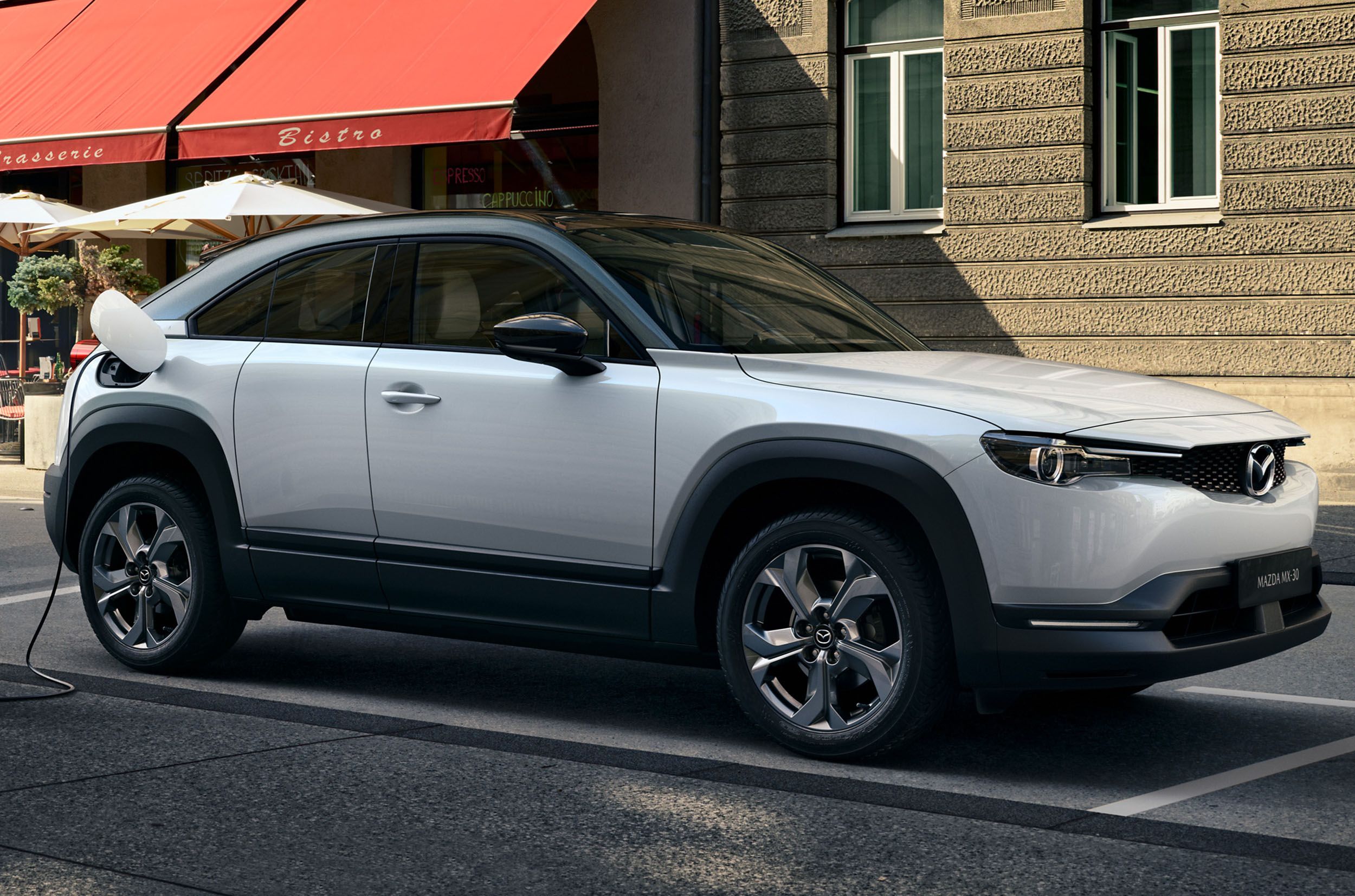In a world where the Lucid Air delivers more than 500 miles on a charge, the 2022 Mazda MX-30 with its 100-mile range feels like an electric vehicle that belongs back in 2012, not 2022. Perhaps that's why Mazda recommends only buying the MX-30 as a second car. Though we believe range anxiety is an overblown issue for most drivers, the MX-30's range is far too short. Luckily, Mazda has a clever idea to make it work better for the American lifestyle. By giving it an engine.
Though it's been hinted at and delayed for some time now, in an Automotive News interview, Mazda has confirmed that the plug-in hybrid MX-30 will be announced later this fiscal year. Unlike any other PHEV sold in the US, the MX-30 will have a rotary engine under the hood. This will be Mazda's first rotary engine for the US market since the RX-8 left production in 2012.
Though it will be marketed as a plug-in hybrid, the MX-30 will operate more like a Chevrolet Volt or BMW i3. The rotary engine won't directly drive the wheels. Instead, it will act as a generator to charge the batteries. It's unclear if Mazda will keep the MX-30's battery size the same for the PHEV model, but BMW did that and it made the i3 far easier to live with.
If Mazda retains the same 35.5-kWh lithium-ion battery enabling a 100-mile electric driving range, the range extender could provide an additional 80 miles, making the MX-30's range far more competitive. This would make the MX-30's range more competitive with most pure BEVs. This was more or less the case with the BMW i3's range extender. Mazda could, optimistically, try and get another 150 miles of range, which would really make the MX-30 suitable for most American users, providing quick refuel times on long journeys, and quick daily recharges for basic errands. Taking advantage of the MX-30's 40kW DC fast charge speeds, the MX-30's battery can go from 10-80 percent battery in 39 minutes.
Such a drivetrain would offer the best of both worlds between a PHEV and a BEV. Typically, PHEVs only provide up to 50 miles of range, many far less. If Mazda pulls this off right, it will create a car that can be used as an EV 90 percent of the time, then as a gasoline car for the remaining 10 percent when owners want to take a road trip. That is, of course, provided that owners keep it charged.
Unfortunately, Mazda is unlikely to give us the best-case scenario, and the MX-30 may get a slightly smaller battery with the rotary range extender.
Mazda says we can expect more information by the second half of the fiscal year, which ends on March 31, 2023.
Further down the line, however, the rotary could be used for hydrogen combustion - something Mazda toyed with back when the RX-8 was around still. That could make the MX-30 a zero-emissions vehicle with all the benefits of an EV on short journeys.

